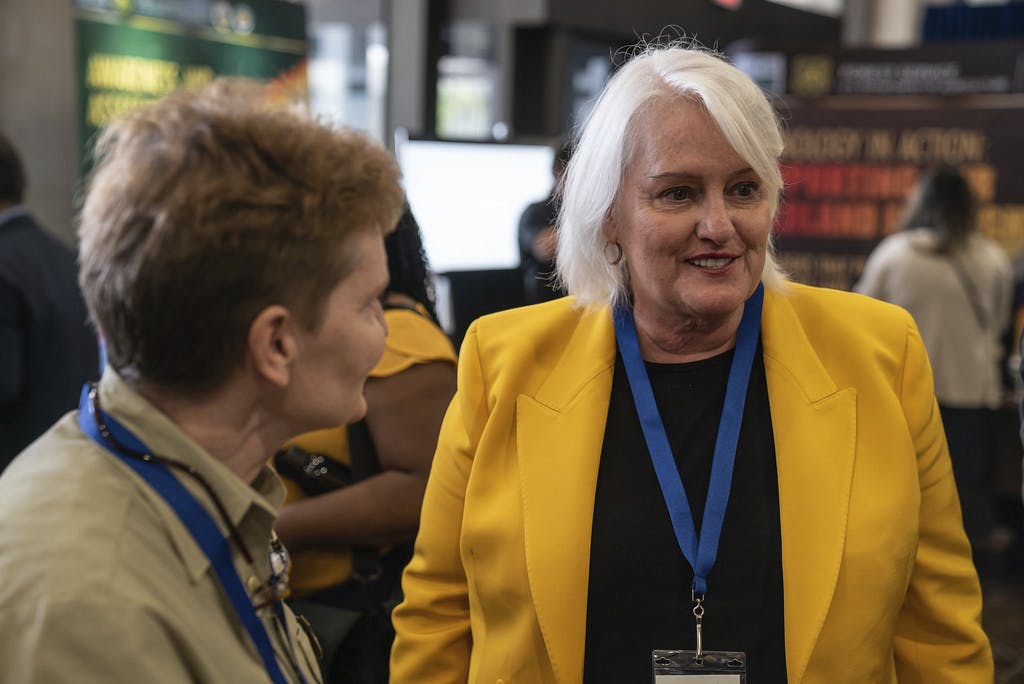PIFs Drive Innovation Across Federal Health Sector
The program is providing opportunities for innovators to bring transformational processes and emerging technology to government agencies.

Presidential Innovation Fellows are supporting federal agencies like the Food and Drug Administration and National Institutes of Health to transform technology and processes around data, artificial intelligence and even wearable devices to advance various public health missions.
The PIF Program is housed within the General Services Administration’s Technology Transformation Services arm, and it recruits experts across industry and academia to address technology challenges and drive innovation across the federal government.
At the FDA, PIF Arunan Skanadarajah is supporting the agency’s CoInnovate@FDA project, which was outlined under its Technology Modernization Action Plan to drive innovation through data-intensive demonstration projects. As part of this effort, Skanadarajah is working to establish better data management and governance and scale artificial intelligence.
“My time with [the PIF Program] is a progression to further investigate what it takes to translate medical innovation out into the field,” Skanadarajah said at a virtual event about the PIF program. “With FDA, I’m helping drive their AI strategy, making sure that they think about operational AI, like inspections and decision-making, and that they take a thoughtful approach to what has been learned in academia and industry.”
Skanadarajah’s experience in developing AI products and leveraging digital capabilities to expand access to health care has informed the agency on how government decisions influence industry operations.
“I’ve worked to bring people together who are thinking about health care delivery and using things like community health care workers, who provide care in the local community, then pairing them with technology developers and policy makers to push digital health innovation,” he said, adding that these approaches can help enable development of new drugs and new medical devices.
At NIH, PIF Krishna Juluru is supporting the National Institute of Biomedical Imaging and Bioengineering to unite health care information. Juluru largely focuses on digital health care to connect at-home and point-of-care COVID-19 tests to other systems.
Recently, NIH partnered with the Centers for Disease Control and Prevention to advance research in at-home COVID-19 tests in the “Say Yes! COVID Test.” The goal of the program is to determine if frequent self-administered COVID-19 testing could help slow community transmission of the virus.
NIH will collect additional data through participant surveys to determine whether frequent self-administered testing could prevent spread of the virus.
“We hope to gain foundational data that can guide how communities can use self-administered tests to mitigate viral transmission during this and future pandemics,” said NIH Director Dr. Francis Collins in an agency press release.
“There’s a desire in the government to do good things that benefit the public. When people come in with good ideas and well-intentioned ideas, there is a great reception to them and innovation that comes with it,” Juluru said.
During her first year as a PIF, Michelle Holko worked with NIH’s All of Us research program to combine data from electronic health records, surveys, demographics, and particularly wearables to introduce prevention strategies and improved treatments for various health challenges.
“I am so proud of the work we’ve done with the All of Us program. Taking data, which wasn’t even on servers, bringing it together, then packaging that and making it available to the research community was a tremendous accomplishment,” Holko said during the event.
Holko has also worked with the Digital Health Council on remote monitoring capabilities of COVID-19 to help stop the spread of the virus and improve care for people who’ve already contracted it.
Connected devices have introduced vulnerabilities that agencies are keen on securing, especially amid recent security incidents. Janine Medina, a PIF with the Biomedical Advanced Research and Development Authority (BARDA), focuses on emerging biological threats in cybersecurity.
She works with BARDA DRIVe’s innovation arm to bring in new medical devices and digital therapies into the government, as well as advising on current and future best practices for manufacturing and security.
“I’m trying to get folks to invest more in documentation to drive the conversations as to what is working and what isn’t working so that we can move forward,” she said.
This is a carousel with manually rotating slides. Use Next and Previous buttons to navigate or jump to a slide with the slide dots
-

Cyber Incident Reporting Regulation Takes Shape
An upcoming CISA rule aims to harmonize cyber incident reporting requirements for critical infrastructure entities.
5m read -

Connectivity Drives Future of Defense
The Defense Department is strategizing new operating concepts ahead of future joint force operations.
8m read -

5 Predictions for AI in Government Technology
Agencies are setting plans in motion not only to integrate AI into their enterprises, but also ensuring the data that power these systems are fair.
41m watch -

Agencies Meet Key AI Goals Amid Call for More Experimentation
Federal leaders call for prioritizing artificial intelligence and its applications to critical cybersecurity and workforce initiatives.
7m read







